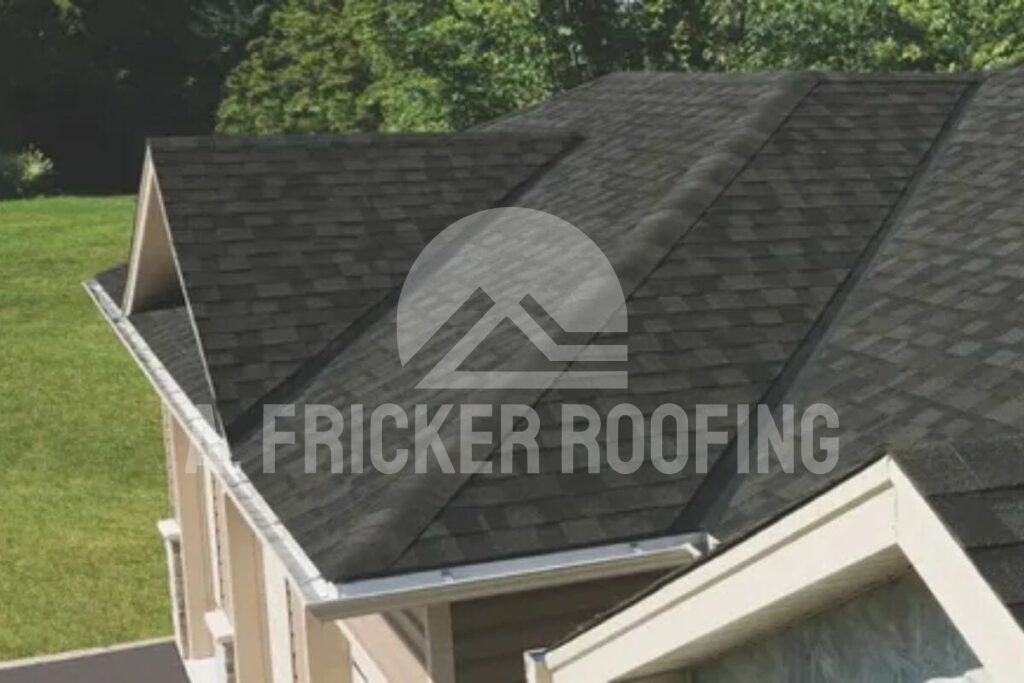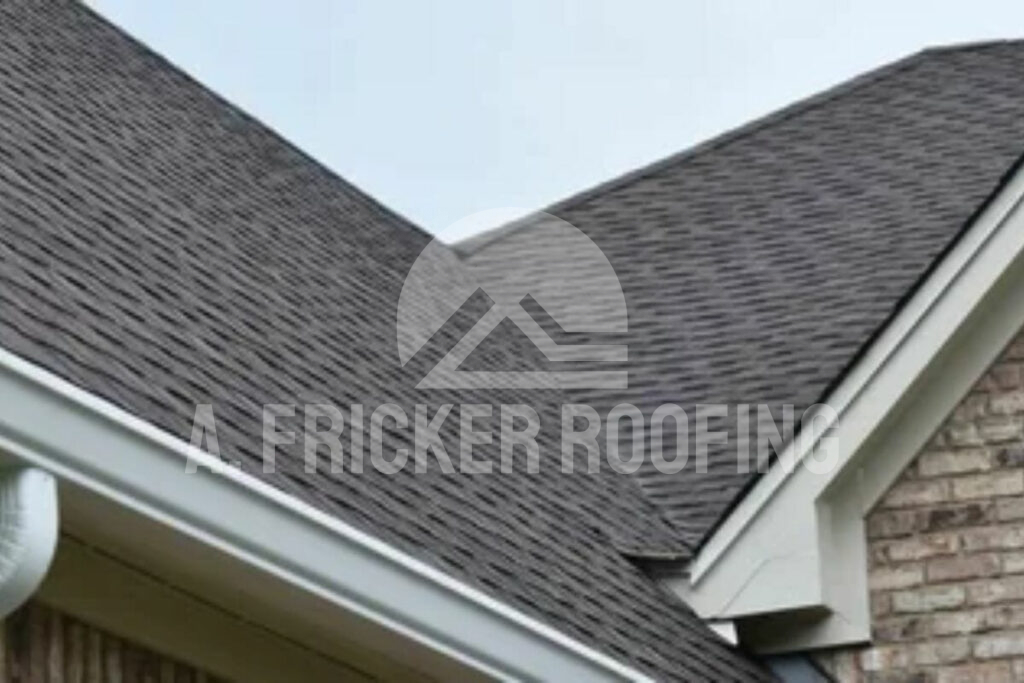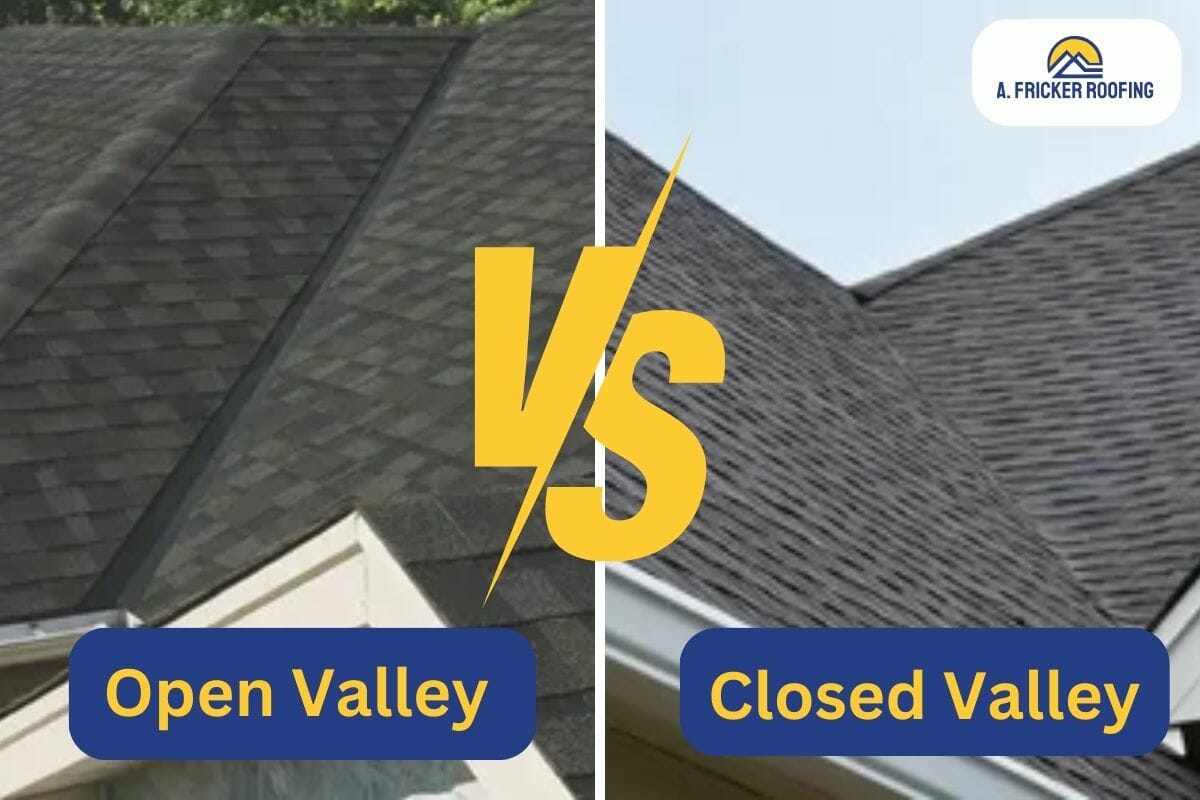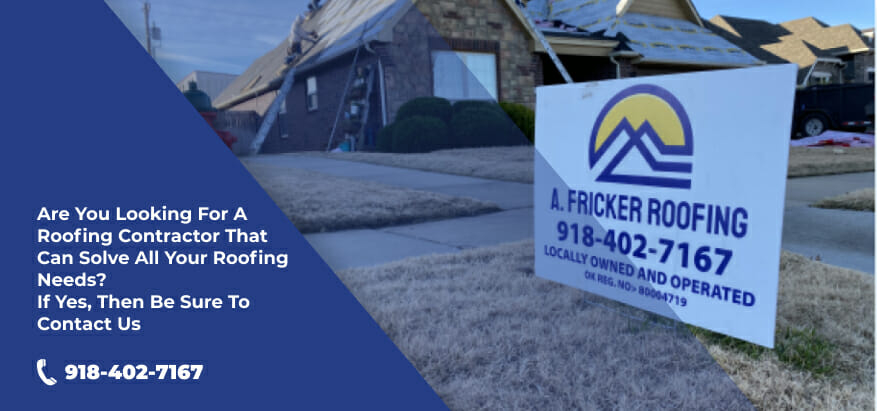To continue the theme of our last blog post, roof valley types, we are writing this blog post on open valleys vs. closed valleys, to enhance your roofing knowledge further and help you make the right choice.
Many homeowners think of roof valleys as an aesthetic element only. They ignore the fact that roof valleys are also responsible for their roof’s durability. Roof valleys additionally make a significant contribution to your roof’s longevity and prevent frequent damage.
What if there is no valley on a roof and water remains stagnant? That stagnant water will create a major problem for your roof’s integrity and the structure below. From creating tiny holes in the shingles to roof deck rot and leaking water, the roof will remain susceptible to water damage.
But which type of roof valley should you choose? An open valley or closed valley? Keep reading to find the right choice for your home.
What A Roof Valley Is
A valley forms when two sloping surfaces meet or intersect with each other, which is commonly found on sloped roofing systems. Flat roofs typically do not have valleys.
Sloped roofs consist of two intersecting planes, which create a thin or narrow valley line. If you see an under-construction roof, you’ll notice these sloping surfaces coming together, separated only by a thin gap. If this gap remains exposed or uncovered, water will infiltrate the roof deck below, instead of flowing off the valley.
Open and closed valleys are two ways of covering the roof valley. With a closed valley, the roofers overlap the roofing shingles over the valley line to completely cover it. While with open valleys, the roofers don’t cover the valley line with shingles. Instead, they install a metal strip of flashing between the sloping planes. This creates a seamless bridge for the water to flow over and off the roof.
Also Read: Problems With Your Roof Valley? Here Is What You Can Do About It
What Are Open Valley Roofs?

Open valley roofs are often described as exposed valleys, as the roofing shingles are installed on the roof up until where the two slopes meet, where a metal strip of flashing is then placed over the valley instead of continuing with shingles.
Since the valley flashing is exposed, this creates an interesting appearance for the roof, and homeowners can choose between different types of metal for the flashing to customize the valley to their preferences.
The Pros Of Open Valley Roofs
Open valley roofs offer several advantages that may make them a viable option for your home:
1. Cost-Effective Installation
One of the primary reasons why homeowners install open valley roofs is their cost-effectiveness. While you may not need to buy additional shingles for open valleys, the metal flashing comes with its own expense, though it’s cheaper than shingles. This makes open valleys an attractive option for homeowners on a budget.
2. Ease of Inspection
The exposed valley flashing on open valley roofs makes maintenance and cleaning easier for homeowners. Roofing professionals can quickly identify and address any issues, potentially leading to quicker and more cost-effective repairs.
3. Enhanced Water Flow
Since open valleys are constructed with metal flashing, they allow water to flow quickly off the roof. Additionally, in colder climates with snow, open valleys are less prone to ice dams, which can be a common issue with closed valley roofs.
4. Options for Aesthetic Appeal
The exposed flashing creates a distinct architectural feature, adding character to the roof. This unconventional style can complement certain home designs and personal tastes. Moreover, many material choices to choose from, including copper, steel, and aluminum. Steel and aluminum create an elegant and distinctive look while being cost-effective.
The Cons of Open Valley Roofs
Now, let’s have a look at the cons of open valley roofs.
Durability Concerns
Perhaps the most significant concern with open valley roofs is their durability. The exposed flashing is more susceptible to damage from environmental factors such as falling branches, hail, or debris during storms. While open valleys are easier to clean, they can frequently become clogged with debris which can be an added hassle for homeowners.
Aesthetics
Both types of roof valleys offer seamless appeal. Aesthetics are no longer a concern as they offer a sleek and elegant look to your roof. However, if you prefer an unconventional look, an open valley may be the right choice. If your home’s architectural style leans towards a more conventional and uniform appearance, a closed valley roof might be the better option.
How To Maintain An Open Valley For Your Roof’s Durability
Open valleys are fantastic because they make it easier to spot issues early on, but let’s explore how to maintain them properly.
1. Clear Debris Regularly
Your open valley can accumulate leaves, branches, and other debris over time. If left unattended, this can block the flow of water and lead to leaks.
- Grab a ladder and safely access your roof.
- Remove any debris from the open valley by hand or with a roof rake.
- Check for any signs of damage to the metal flashing. If it’s rusty or has holes, it’s time for a replacement.
2. Inspect the Flashing
The metal flashing along an open valley protects it from water infiltration. Make sure it’s in top-notch condition:
- Examine the flashing for signs of rust, corrosion, or damage.
- If you spot any issues, consider applying a rust-resistant primer and a fresh coat of paint to prolong its life.
What Are Closed Valley Roofs?

Closed valley roofs, often referred to as concealed valleys, have been the go-to choice for many homeowners and roofing professionals. Closed valley roofs are designed with shingles extending over the valley, covering the flashing and underlayment. This creates a smoother and more seamless appearance.
The Pros of Closed Valley Roofs
Closed valley roofs offer several advantages that make them a preferred option for many homeowners:
1. Enhanced Durability
One of the primary reasons homeowners choose closed valley roofs is their durability. The shingles that extend over the valley provide an extra layer of protection to the flashing and underlayment. This added coverage reduces the risk of damage from external elements, making closed valley roofs a durable choice.
2. Aesthetic Appeal
Many homeowners prefer the clean, finished look of closed valley roofs. The shingles seamlessly cover the flashing, resulting in a polished appearance that can enhance a home’s curb appeal. If you prioritize a classic, timeless, and uniform look for your home, closed valley roofs are an excellent choice.
3. Versatility
Closed valley roofs can be used with various roofing materials, including asphalt shingles, metal, and slate. Whether you have a modern or traditional home design, closed valley roofs can complement it seamlessly.
The Cons of Closed Valley Roofs
Nevertheless, closed valley roofs are not without their drawbacks. So, let’s have a look at a few of them.
Higher Installation Costs
Closed valley roofs tend to be more expensive to install compared to open valley roofs. This is primarily due to the additional roofing material required to extend over the valley. The higher upfront costs can be a concern for budget-conscious homeowners.
Maintenance Challenges
While closed valley roofs are durable, they can be more challenging to inspect and maintain. The flashing is concealed beneath the shingles, making it less accessible. This may require roofing professionals to perform frequent inspections and maintenance tasks.
Also Read: Problems With Your Roof Valley? Here Is What You Can Do About It
How To Maintain A Closed Valley Roof
1. Inspect Shingles Regularly
Just like with open valleys, closed valleys can experience shingle damage. To maintain a closed valley roof, follow these steps:
- Walk along the roof and inspect the shingles covering the valley.
- Replace any damaged or missing shingles.
- Use roofing cement to seal gaps and ensure water can’t get through.
2. Check for Debris
Even though closed valleys are hidden from view, debris can still find its way inside. This can lead to water blockages and potential leaks. Here’s what to do:
- Inspect the closed valley for any debris that may have entered through gaps or openings.
- Remove any debris and ensure the valley is clear.
3. Examine the Underlayment
Underneath those stylish shingles lies the underlayment, which provides an additional layer of protection. To maintain your closed valley roof, inspect the underlayment as follows:
- Carefully lift the edge of the shingles to access the underlayment.
- Look for any signs of moisture or damage, such as mold or rot.
- Replace any compromised underlayment to maintain a strong barrier against water.
Best Roofing Services For All Your Roofing Needs In Tulsa, OK
Whether you are looking for a new roof installation or replacing the existing roof, repairing a roof valley, or needing an inspection, you can get the roofing services you need with A. Fricker Roofing and Waterproofing in Tulsa, OK. If you are a Tulsa homeowner or commercial building owner looking for a reliable and skilled roofer, contact us today at (918)-402-7167.

